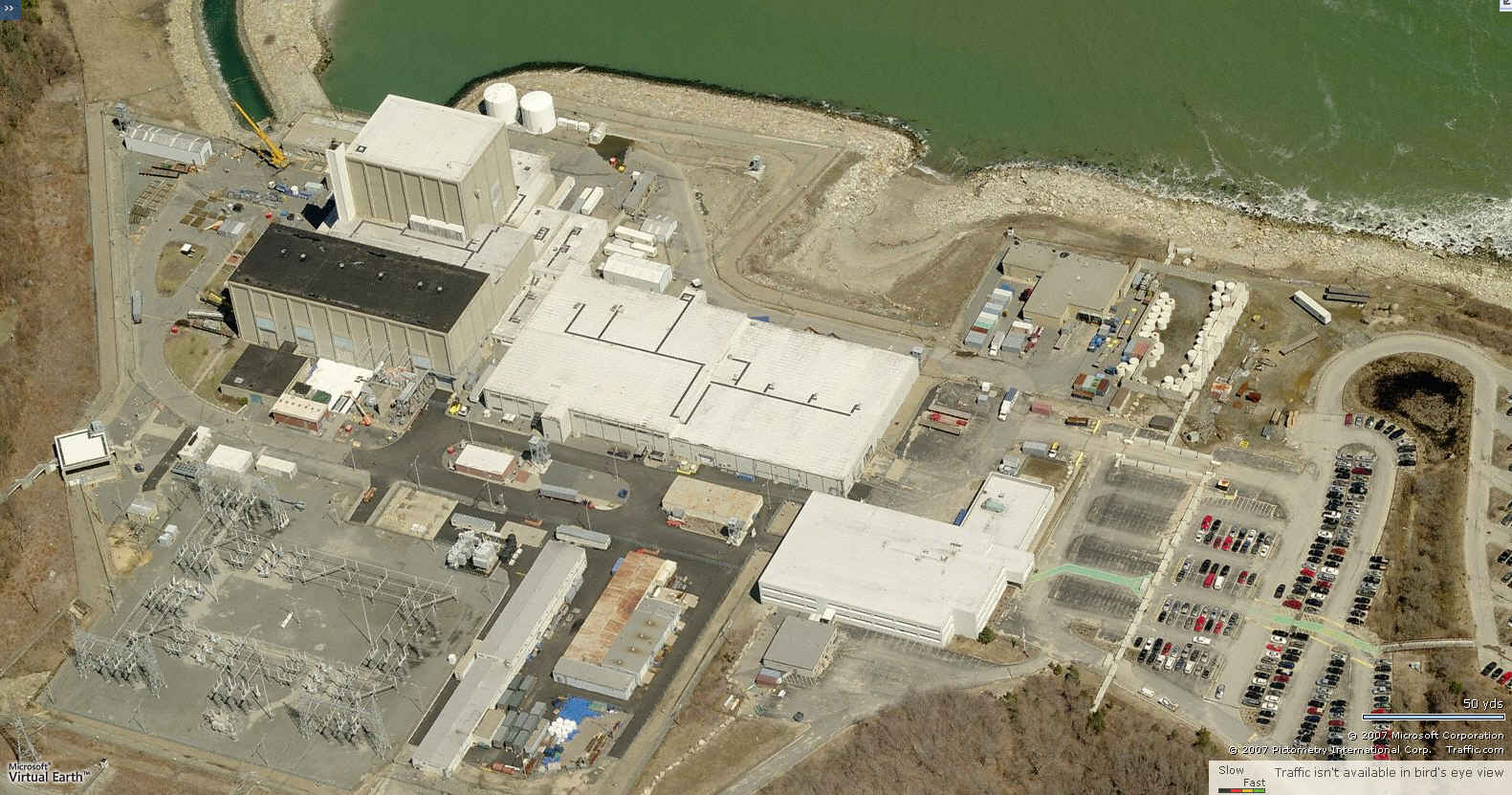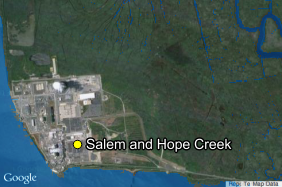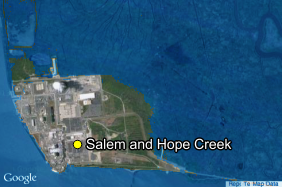
The question of the day is not whether more U.S. reactors will permanently close over the next few years, it’s how many–especially on the East Coast–still will be operating by the end of this decade.
Simple economics, driven by accelerating deployment of renewables and low natural gas prices, already threaten the operation of several East Coast reactors, most notably FitzPatrick in New York and Pilgrim in Massachusetts. If reactors are continually losing money, their utilities will close them, no matter what the utility bosses may say about how much they love nuclear power. That’s the entire reason the new industry group Nuclear Matters exists–to try to salvage what the industry can out of its uneconomic reactors and keep as many of them running as possible.
But economics is no longer the only issue East Coast reactors have to face (although, in the nuclear power business, nearly all issues make their way back around to economics). Outright public and governmental opposition to continued reactor operation, especially at New York’s Indian Point and, again, Pilgrim, also jeopardizes the future of some reactors. Since many of the most endangered reactors are Fukushima-clone GE Mark I designs, they’re eventually going to have to comply with post-Fukushima safety requirements–and that will cost money, a problem for reactors already operating on the margins and thus something the utilities will fight as long as possible (see how it comes back to economics?….).
Add two more issues to the list threatening East Coast reactors: earthquakes and rising seas caused by climate change.
A report in today’s Huffington Post examines maps projecting sea level rises recently released by the National Oceanic and Atmospheric Administration (NOAA) and finds 15 reactors could find themselves underwater by the end of this century. Among them are four GE Mark I designs, including Entergy’s Pilgrim reactor. The most threatened by rising sea levels, according to the NOAA projections, are the two-unit Salem and single unit Mark I Hope Creek reactor, which share a site in southern New Jersey.
As the article states,
“During the 1970s and 1980s, when many nuclear reactors were first built, most operators estimated that seas would rise at a slow, constant rate. That is, if the oceans rose a fraction of an inch one year, they could be expected to rise by the same amount the next year and every year in the future.
“But the seas are now rising much faster than they did in the past, largely due to climate change, which accelerates thermal expansion and melts glaciers and ice caps. Sea levels rose an average of 8 inches between 1880 and 2009, or about 0.06 inches per year. But in the last 20 years, sea levels have risen an average of 0.13 inches per year — about twice as fast.”

But it may not take until the end of the century for sea level rise to affect reactors; Hurricane Sandy, for example, brought floodwaters to the point where they threatened water intake systems at Salem/Hope Creek and Oyster Creek (which is already scheduled to close by 2019 and may close earlier if required to make any post-Fukushima modifications). Recent research has indicated that Sandy may be the future–East Coast hurricanes are projected to be both stronger and hit further north in coming years

than has been the case in the past (although both Florida’s St. Lucie and Turkey Point nuclear facilities are also high on the list of those threatened by sea level rise–as is much of southern Florida’s coast).
While earthquakes traditionally have been associated with West Coast reactors, especially Diablo Canyon and the now-closed San Onofre complex, the issue is also critical in the East. The NRC’s current review of seismic qualifications of U.S. reactors has zeroed in primarily on East Coast reactors, including Indian Point, Salem (again), Peach Bottom and Limerick in Pennsylvania (composed of four GE reactors), and, yes, the poster child of the nuclear trifecta, Pilgrim, which along with Indian Point and Salem is ranked highest at risk.
The NRC is taking its time at requiring the seismic evaluations and subsequent likely modifications. Even the three highest priority sites have until December 2016 to complete their upgrades. But the NRC is under increasing pressure to more more quickly. At a Senate hearing last week, Environment Committee chair Barbara Boxer told the agency to quit footdragging on its seismic evaluations. “Earthquakes will not wait until after the paperwork has been completed,” she said. While Boxer was referring primarily to Diablo Canyon, the issue applies to all of the reactors identified as needing new evaluation based on new scientific understanding of how earthquakes work.
Pilgrim is clearly most at risk here, with poor economics and the prospect of major and expensive upgrades. But so are several other East Coast reactors–some not the ones most thought of as being endangered. When safety concerns cost real money, marginal reactors will close. The history of the NRC strongly suggests that it will do whatever possible to delay forcing utilities to make expensive safety-related improvements, but it can’t hold off forever, especially if the public and our elected representatives keep up the pressure.
The combination of rapid deployment of renewables, low natural gas prices, expensive safety upgrades, more climate-related disasters like Hurricane Sandy, growing public opposition, and, of course, continued issues with radioactive waste storage, is not just theoretical, it’s a real and pre-eminent challenge to reactor operation. And it’s a combination that, with effective public pressure and opposition with will close more East Coast reactors before the end of this decade. Do your part, and you can count on it.
Michael Mariotte
May 19, 2014
Permalink: https://www.nirs.org/2014/05/19/nuclear-trifecta/
You can now support GreenWorld with your tax-deductible contribution on our new donation page here. PayPal now accepted. We gratefully appreciate every donation of any size–your support is what makes our work possible.
Comments are welcome on all GreenWorld posts! Say your piece above. Start a discussion. Don’t be shy; this blog is for you.
If you like GreenWorld, you can help us reach more people. Just use the icons below to “like” our posts and to share them on the various social networking sites you use. And if you don’t like GreenWorld, please let us know that too. Send an e-mail with your comments/complaints/compliments to nirs@nirs.org. Thank you!
Note: If you’d like to receive GreenWorld via e-mail daily, send your name and e-mail address to nirs@nirs.org and we’ll send you an invitation. Note that the invitation will come from a GreenWorld@wordpress.com address and not a nirs.org address, so watch for it.




Reblogged this on Residents Organized for a Safe Environment and commented:
From our friends at Green World
On the evening of Sandy, the high tide** driven storm surge in the Hudson apparently came within inches of topping the Indian Pt containment ponds. The facility was not powered down until the last minute. As if that wasn’t sufficiently problematic (the facility’s emergency warning system has been, um, ‘inadequate’ for at least 2 decades), there’s this: No Plans To Change Paths of Pipe/Power Lines Near Indian Point …. The response includes this: Putnam Legislators Seek Moratorium on Gas Pipeline Near Indian Point; this: Spectra Pipeline Lawsuit Advances & now this Green Party seeks 5-state alliance against proposed expansion of Algonquin Pipeline. (Earlier this year, another factor held forth: Strike Threat Looms at Indian Point. The strike was averted. Meanwhile, Indian Point owner, Entergy, fails to protect Hudson River fish.)
You may have already circulated/commented on this October 2011, NRDC post-Fukushima assessment: Nuclear Accident at Indian Point.
**The Hudson tides are registered as far north as Troy, beyond the state capital & seaport of Albany’s perilous Bakken Oil rail cars boom.
What is up with Florida? Having been burned at Levy County for $1.5 billion on another AP 1000 which was never finished, they are going to do it again in a location which where the surrounding area will be flooded inside the design life of the reactor?
There seems to be a special kind of foolish in Florida.
Are the Turkey Point nuclear reactors near Homestead, Florida really 82 feet about sea level? http://www.anyplaceamerica.com/topographic_maps/florida/miami-dade_county/turkey_point_nuclear_power_plant/251-10990/
Yep, perfect place for hurricanes and rising seas.